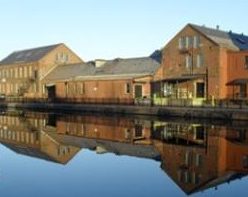[Drive north along Lyman Street from its intersection with Maple Street. Near the bottom of the hill but before the railroad overpass, turn left onto Gatehouse Road. Stop between the rail line and the Boathouse. Look to the right. Also walk forward to see the first level spike.]
This stop has great views of first and second level canal intersection. It is along Gatehouse Road in Holyoke.
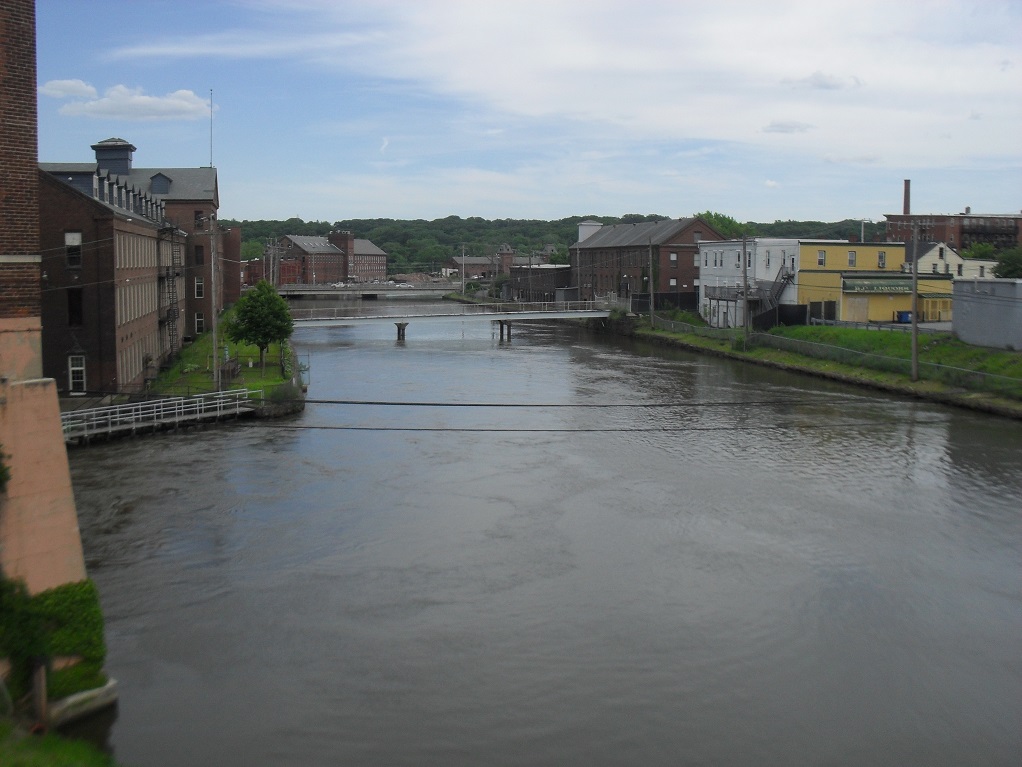
The location has had three distinct uses through the years. At first it was a lock for boats that were hauling construction material for the canals. Then it was turned in the first test flume in Holyoke being used by James Emerson (LINK) from 1870 to 1879. He increased the power used by turbines from 70 to 80%. Thirdly, from 1920 to the present, it is used as an electrical power station with three medium-sized turbines.
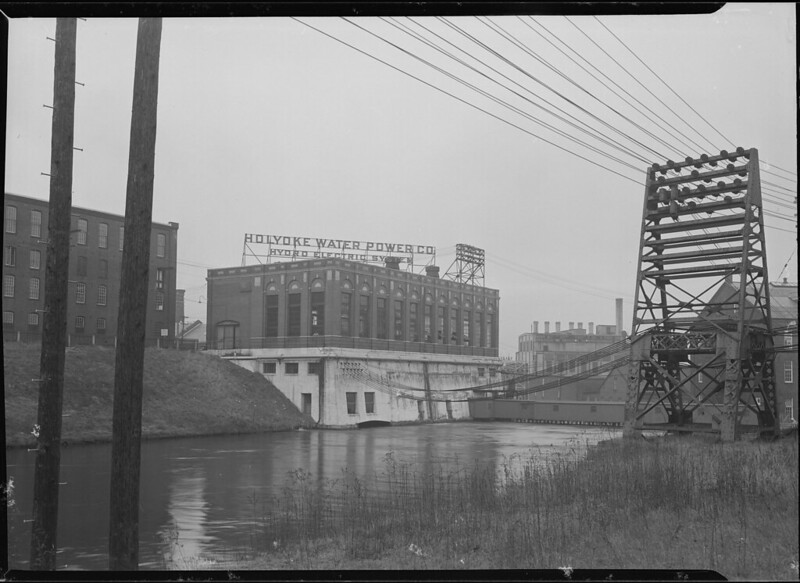
The spike of the First Level Canal that you see in front of you was the site of the original protocanal that fed water into five small mills owned by Alfred Smith. No one knows for sure when the original canal was built.
To the southwest of the Boatlock is the Whiting Paper Mill. Here William Whiting had his original paper mill. He had two more mills in Holyoke and owned one of the largest paper mills in the country. He had started working at the Holyoke Paper Mill but the Newton Brothers converted this Whiting Mill from a wire mill to a paper mill for him.
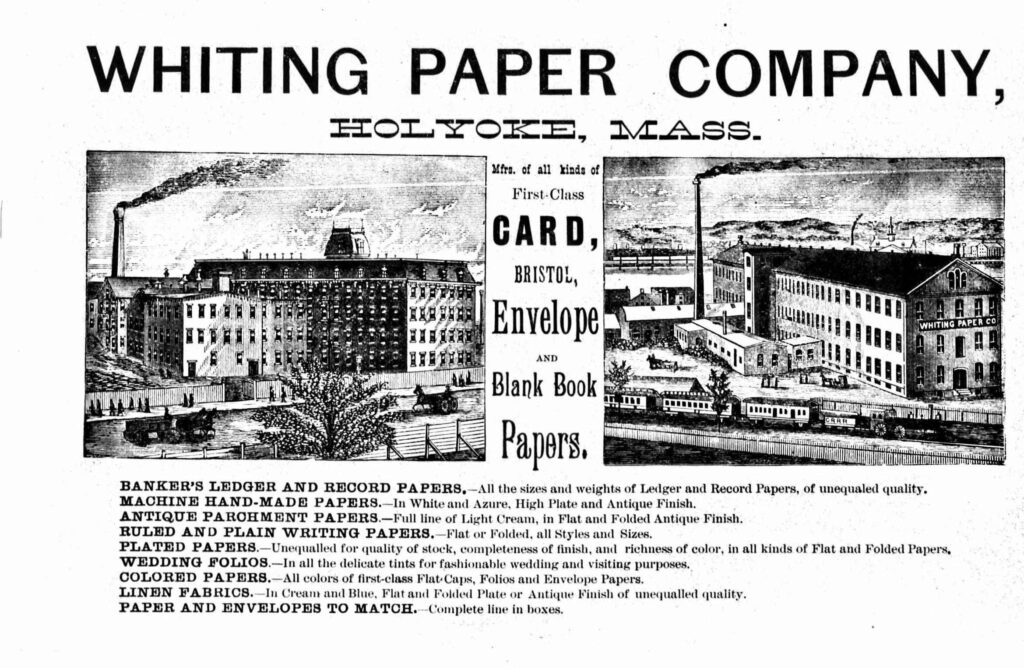
To the south of the Whiting number 1 mill is a mill along Lyman Street that was at first called the Hampden Cotton Mill. After 20 years of operation it turned into the Mackintosh and specialized in men’s suits. Now it is part of the Wherehouse?, a social function business started in 1982.


To the east of the Boatlock, see the magnificent view of the Second Level Canal. The mills in front of you are those of the Hadley Cotton Mill. Beyond are the Valley Paper Mill and the Albion. The train tracks to your right are still active. The second Holyoke train station is about 200 yards away. This is the Richardson Train Station. It is one of a few structures left in New England built in the Richardsonian Romanesque Style.

To the north was the Parsons Mill.
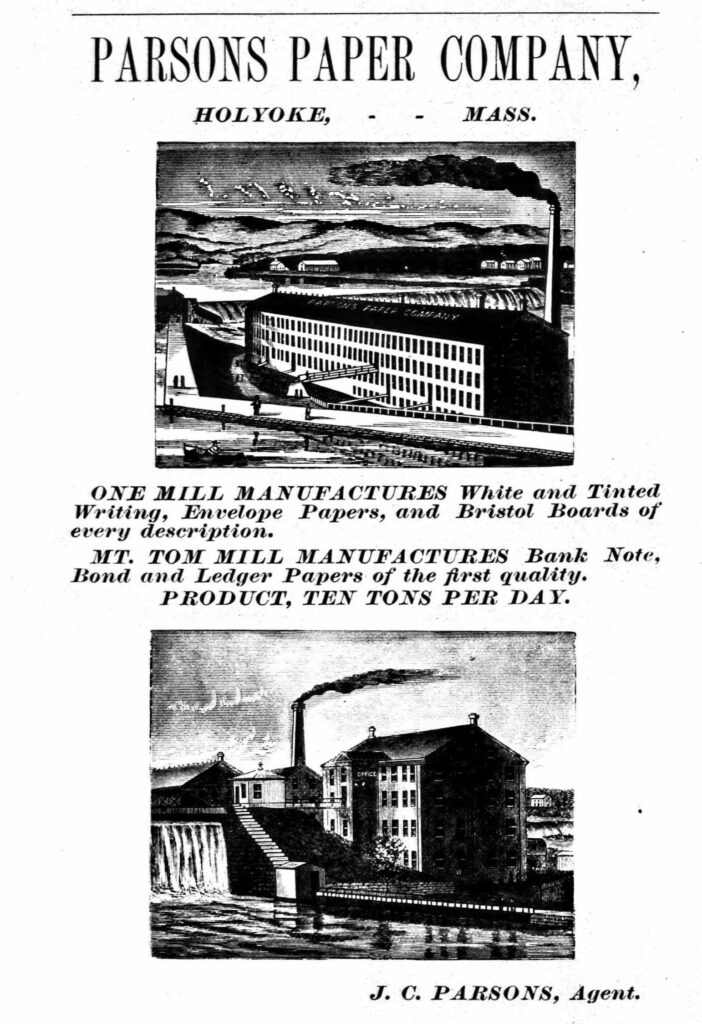
Across the canal from Boatlock Station is the Holyoke Water Power Park. A turbine and plaque was put in place in 1960 to honor the 111th anniversary of the canal system.
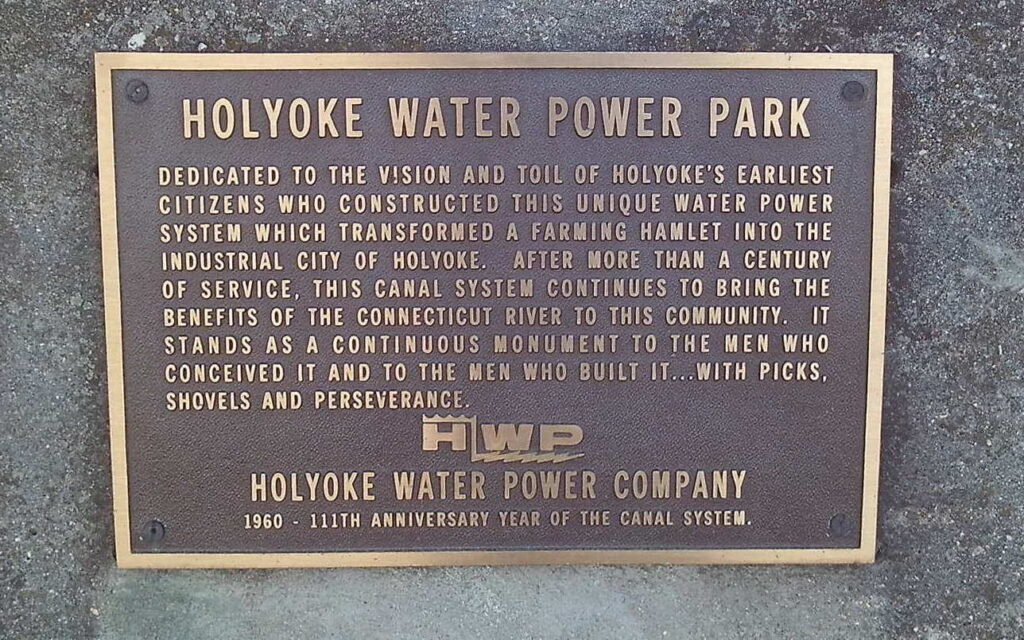
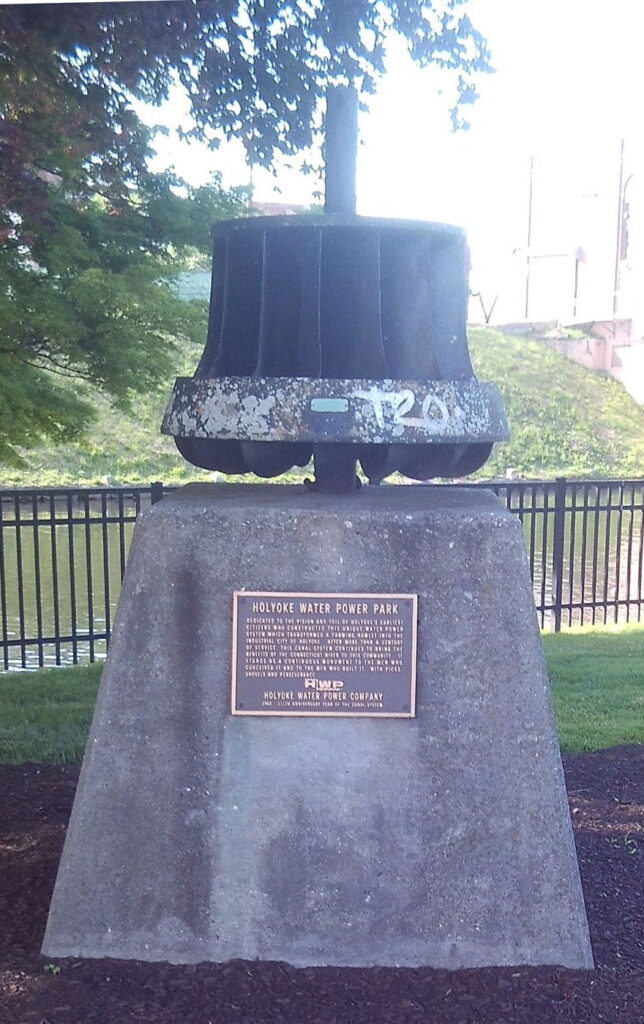
For those who like technical features, the canal overflow number 2 is between the Boatlock turbines and the Hadley Falls Mill. It is 105 feet long and allowed the control of the height of the water in the canal. It is now via an automatic valve but at first was manual.
The Hadley Falls Company started the canals in 1848 with Thomas Perkins, Edmund Dwight, and George Lyman in charge. In 1859 the company failed and was bought out by the Holyoke Water Power Company. Alfred Smith with the encouragement of George Ewing purchased the canals.
